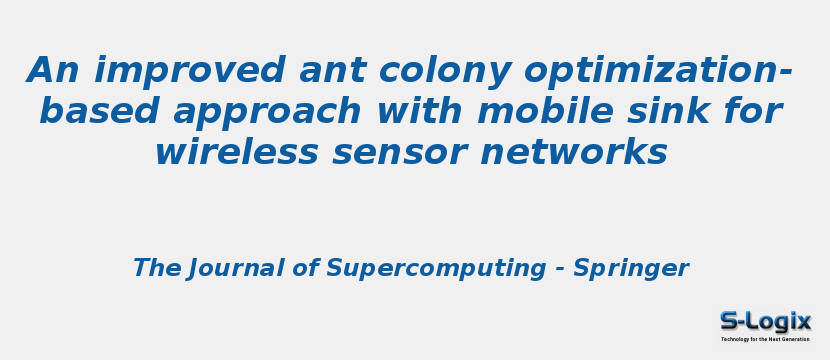Research Area: Metaheuristic Computing
Traditional wireless sensor networks (WSNs) with one static sink node suffer from the well-known hot spot problem, that of sensor nodes near the static sink bear more traffic load than outlying nodes. Thus, the overall network lifetime is reduced due to the fact some nodes deplete their energy reserves much faster compared to the rest. Recently, adopting sink mobility has been considered as a good strategy to overcome the hot spot problem. Mobile sink(s) physically move within the network and communicate with selected nodes, such as cluster heads (CHs), to perform direct data collection through short-range communications that requires no routing. Finding an optimal mobility trajectory for the mobile sink is critical in order to achieve energy efficiency. Taking hints from nature, the ant colony optimization (ACO) algorithm has been seen as a good solution to finding an optimal traversal path. Whereas the traditional ACO algorithm will guide ants to take a small step to the next node using current information, over time they will deviate from the target. Likewise, a mobile sink may communicate with selected node for a relatively long time making the traditional ACO algorithm delays not suitable for high real-time WSNs applications. In this paper, we propose an improved ACO algorithm approach for WSNs that use mobile sinks by considering CH distances. In this research, the network is divided into several clusters and each cluster has one CH. While the distance between CHs is considered under the traditional ACO algorithm, the mobile sink node finds an optimal mobility trajectory to communicate with CHs under our improved ACO algorithm. Simulation results show that the proposed algorithm can significantly improve wireless sensor network performance compared to other routing algorithms.
Keywords:
Wireless sensor networks
Ant colony optimization
Energy efficiency
Mobile sink
Clustering
Author(s) Name: Jin Wang, Jiayi Cao, R. Simon Sherratt & Jong Hyuk Park
Journal name: The Journal of Supercomputing
Conferrence name:
Publisher name: Springer
DOI: 10.1007/s11227-017-2115-6
Volume Information: volume 74, pages 6633–6645 (2018)
